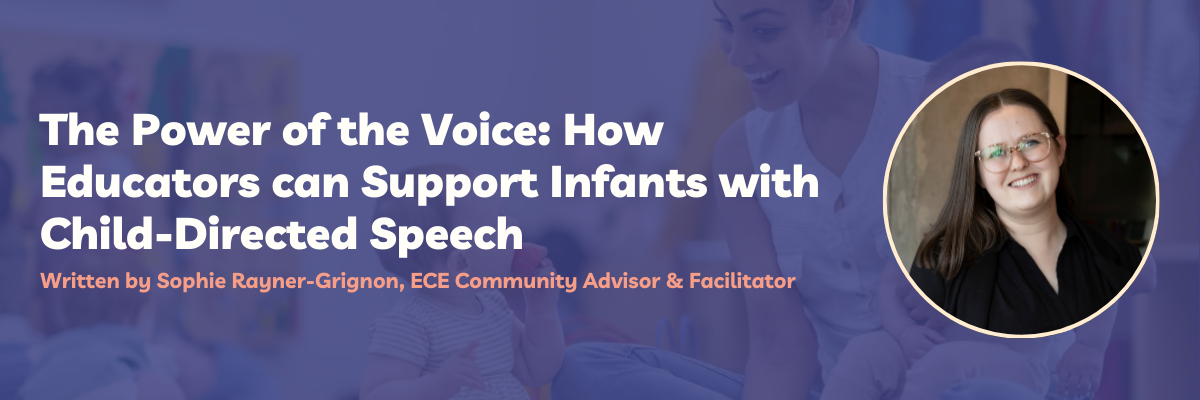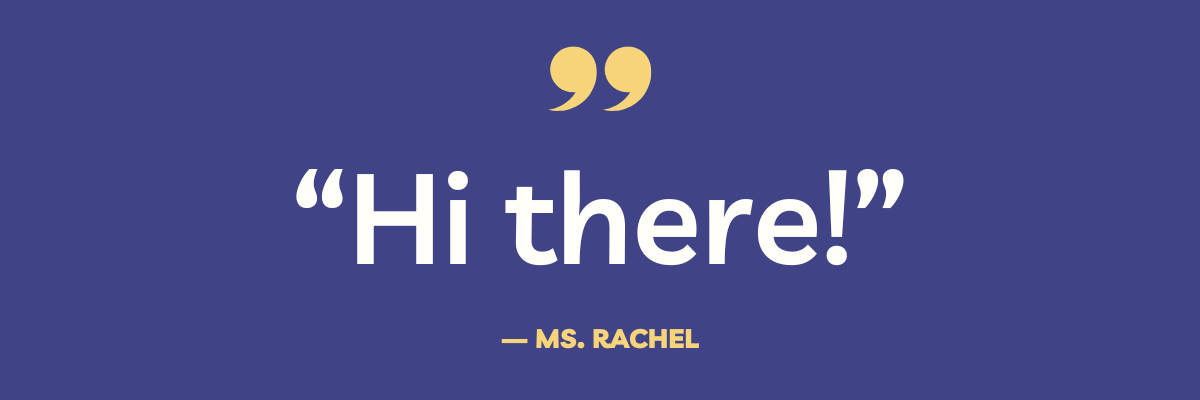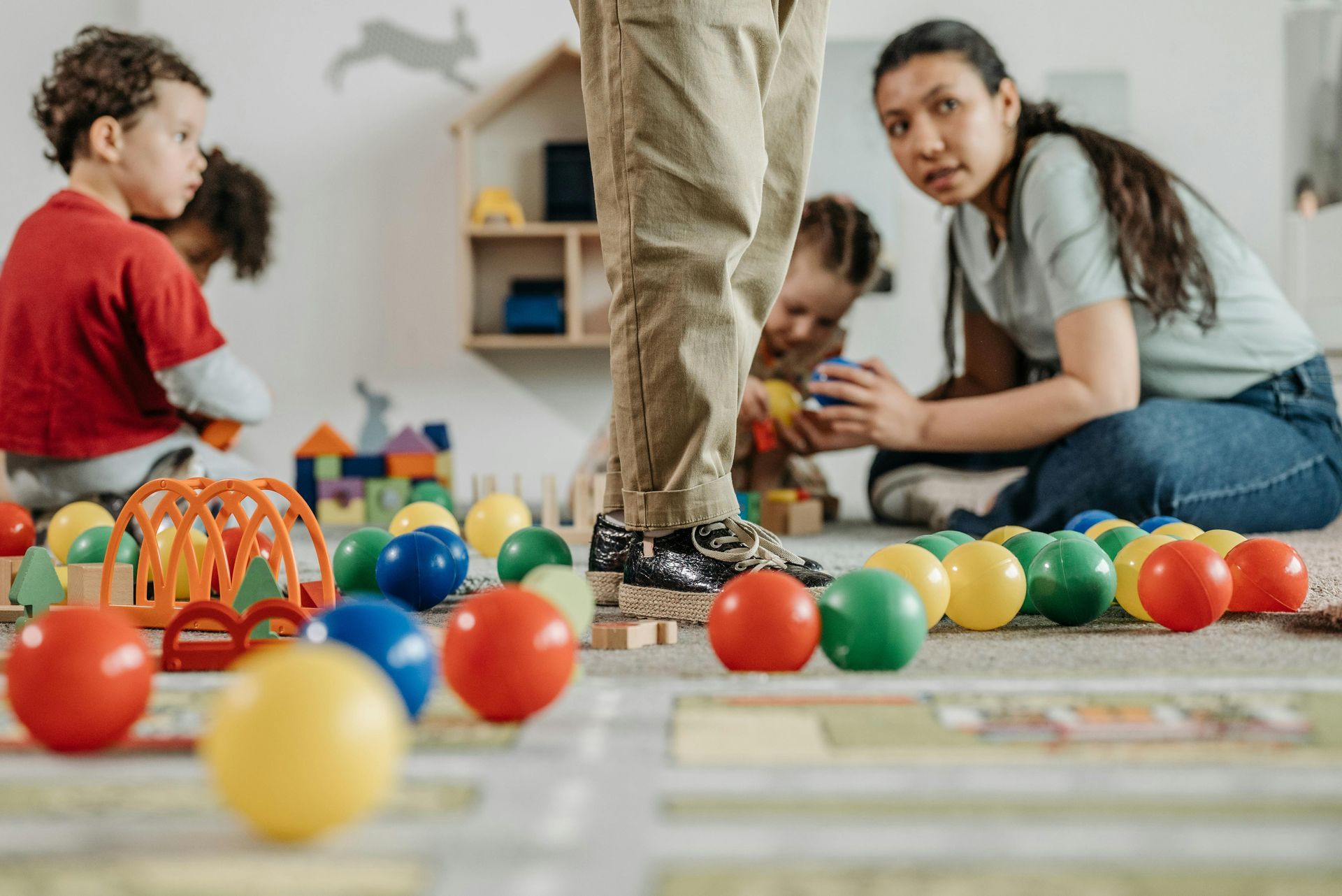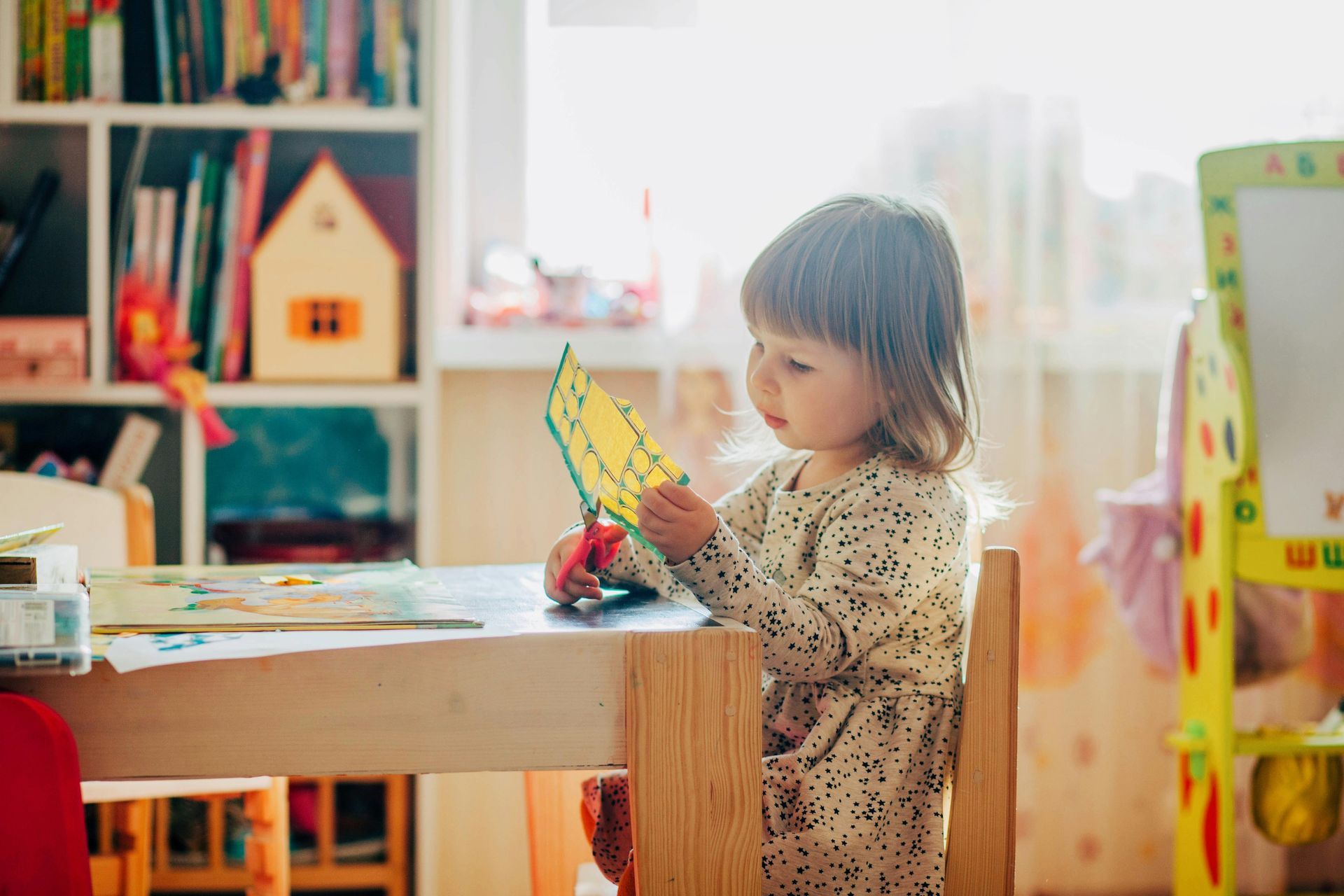The Power of the Voice: How Educators can Support Infants with Child-Directed Speech


Have you ever wondered why baby superstar icon Ms. Rachel talks the way she does? Why do babies love it? It’s because Ms. Rachel is using child-directed speech. By slowing down and stretching words with a heightened pitch, babies stay engaged and want to connect aka LEARN!
Child-directed speech is as easy as a-b-c 1-2-3
- Sing Songy Exaggeration 🎶
- HIGHER Pitch
- Slooooooowed & Streeeeeeeetched
- Pauses… between… words…
Often, we don’t even notice ourselves doing this around small children - it’s a natural human instinct to do!
Pause & Reflect: Have you ever noticed that you talk differently to small children? Maybe animals even? It is also common to speak to pets and gentle creatures like this to tap into their brains.
Research has shown that child-directed speech not only captures an infant’s attention but also helps them distinguish between different phonetic sounds, laying the groundwork for vocabulary development (Zero to Three, 2024). Child-directed speech is tapping directly into parts of the brain associated with auditory processing and speech production. 🧠
Child-directed speech is sometimes mistaken for “baby talk” / goo goo ga ga; however the two have significant differences. Child-directed speech is talking to an infant as one normally would, but using your voice in a specific way. There is always a place for ga ga in babbling and mirroring but supporting children with this tool is efficient and useful.

The cool thing about this tool is that it works across languages and has been used by cultures all around the world (because it’s human instinct) since the dawn of babies! Child-directed speech has many developed many nicknames like “parentese”, “motherese,” or my favourite “educatorese” because it is so culturally and scientifically relevant in our world and human history.
Did you know: Oddly, out of instinct, there was a period of time where child-directed speech was seen as a definite no no and not educational. It was believed that using flat, serious and adult tones and pacing would build a child into an adult talker. But eventually with developing evidence-based research and the return of instinctual following there has been a shift. Child-directed speech is now seen as the more preferable way to speak to children. Isn’t interesting how views shift and change over time?
In early years settings, “educatorese” & child-directed speech pops up all the time! With intention or by-instinct-accident we use educatorese all throughout the day both indoors and outdoors (yes this even works outside!) - gaining children’s attention and building connection is a core of our work! Taking time to intentionally use this tool can help support new children, create calm, add life to everyday routines, and even build community.
Let’s jump into some action and try mixing intentional child-directed speech into big and little moments of the day!
Supporting New Children
- Start Small: Use Educatorese to peak a new child’s attention and build a small starter connection - this could be as small as “Hi…there” (familiar ala Ms. Rachel)
- FaceTime: Special, intentional, face to face time together builds bonds and connections. Try sitting up, on our bellies in tummy time, walking or crawling towards each other, or up in arms! - Remember to follow each child’s lead and cues to help to direct your speech to that specific child 🐥 (not all children enjoy eye-contact so remember it isn’t always required to use your voice - look around as you talk if that works better - your voice is the tool here)
Create Calm
- Child-directed co-regulation: Calm your exaggerated speech and keep it slow, stretched, and breathe deep between words to help calm a disregulated child. Infants (and all humans) need the support of a calm responsive connection to help them regulate again
- Group Calm: Increase your volume slightly so the group can hear but continue the calm; try BIG deep breathes, soft almost singing, or hummmmmming in a directed way to help support the calm of a group. Infants have heightened empathy especially for other infants, so supporting the group or an individual infant back to base helps everyone feel cool and collected.
Everyday Routines
- Diaper: Let the child know it’s their turn for a diaper routine! Utilize this 1-on-1 time to use child-directed speech - Label all the items in the routine “diaaaaaaper! We have a diaaaper,” direct speech to the “baby in the mirror” and help baby connect with their reflection, and take a moment right after the change when you return to program “Thaaaaaank yooou my friend! Great Diaaaaaper!” (Don’t forget to wash your hands 😉)
- Nature Speech: Remember child-directed speech works both indoors and OUTDOORS! So take this outside and utilize the natural sights and sounds of the outside classroom when using child-directed speech outside “see the biiirddd! Tweeeeeet tweeeet!” - Try using the calm, directed-speech at birds or squirrels … do they hear - do they look over?
‼️Advisor Sophie did not advise you to get bit! Be safe and always remember animals are animals so safety safety safety!! 🐿️
- Arrival & Sendoff: Start and finish the day with a bit of intentional directed speech 🎤 Use your voice to say goodbye and hello everyday! Familiarity and repetition are favourites of infants! So pause and repeat…repeat…repeat…one day baby might say bye bye back 👋
Community Build
- Parentese meet Educatorese: Use child-directed speech with parents in front of their babies! Start a conversation together, encourage their loved one to use their parentese voice, talk to family and baby at the same time and show off what great “friends” you and their guardian are! Babies begin to feel stranger anxiety around 7-9 months so they look to their caregiver for safety. Seeing them comfortable and talking in a happy connected way can help an infant feel more comfortable and connected to the conversation.
- Family Culture & Language: This works for any language and is often seen around the world so ask families about language and culture to utilize in your directed speech (example family’s word for mom is Anaana so I could say “hellooo anaaaaaaanaaa”.[Anaana is mother in Inuktitut]) This can even apply to home and family culture - the words, nicknames, and silly words families use for specific things can build their own language! Remembering this is important to building language, if families call a bottle “baba” use the word family uses and build on that! “Huuuuungry? Baaaabaaa time! Let’s have a botttle” - this isn’t baby talk this is family culture and part of many family’s home lives!
- Share Science: Share with your community about the science behind the voice and perhaps someone they are a fan of…Ms Rachel (or almost any children’s character, musician, or entertainer - listen close and you’ll hear it more often then you think 🔎) Try a bulletin board - a poster - post on digital platform - newsletter or social media post from centre!
As you look forward and step into action, take time to reflect and think deeply within yourself, your program, and your babies…
How do you feel about “baby talk” and child-directed speech now? Has anything changed? Will you try something new?
Thinking about past views and shifting knowledge, have views in that perspective shifted for you? How do you feel about children’s voices and the way they are heard, seen, and spoken too?
Knowing more about the science and instinct - where do you see yourself with child-directed speech? Is this new? Is this old news and you’re an award winning baby talker 🏆
Do you have your own memories of positive child-directed speech being used with you or have used it yourself? Do you have ideas of where you would like to intentionally use it now? (Maybe even at home with family or pets?)
Internally, is this natural to you or is it something you need to put more practice into utilizing? Pausing during routines, calming children, and connecting with community, where could you use this?
Looking beyond at nature, have you noticed using this tool with your pet or a squirrel - maybe they look at you when you talk like this? Do you think you’d ever try this?
Thinking about family culture for yourself - do you have any words or language of your own? How do you feel about silly words or made up words for things like bottle or nap? Is there room to expand or shift?
As we conclude I direct-speech to you, I send you trust in yourself and your voice - I know you’ll find what this looks like for you! Thinking about our next steps where will you go from here?
Remember: child-directed speech can start as small as “Hiiiiiiii… theeeeere!”

Ps. Ps. Ps. Nervous? Worried to sound silly?
Try just one of our ideas! Tell your coworkers you’re trying something new and share this blog post, encourage a week of intentional child-directed speech and see how it goes!
(I believe Infants practice unconditional love meaning they don’t judge good intentions 🥹)
Sending you loads of love and luck Advisor Sophie 😘
Check out these resources babies:
https://youtu.be/0IaNR8YGdow?si=E2tKdMhyp8TujBiy
https://www.zerotothree.org/resource/how-do-infants-translate-sounds-to-language/

A Word from the Inspiration Herself:
https://www.tiktok.com/@msrachelforlittles/video/6995564743373245702
Direct Example / Tips
https://youtu.be/O8ETEajtfUs?feature=shared
https://www.youtube.com/watch?v=KNrnZag17Ek&t=81s
Sophie's favourite science & anthropology video on this:
https://www.youtube.com/watch?v=OxCV4K2ipBs&t=185s










